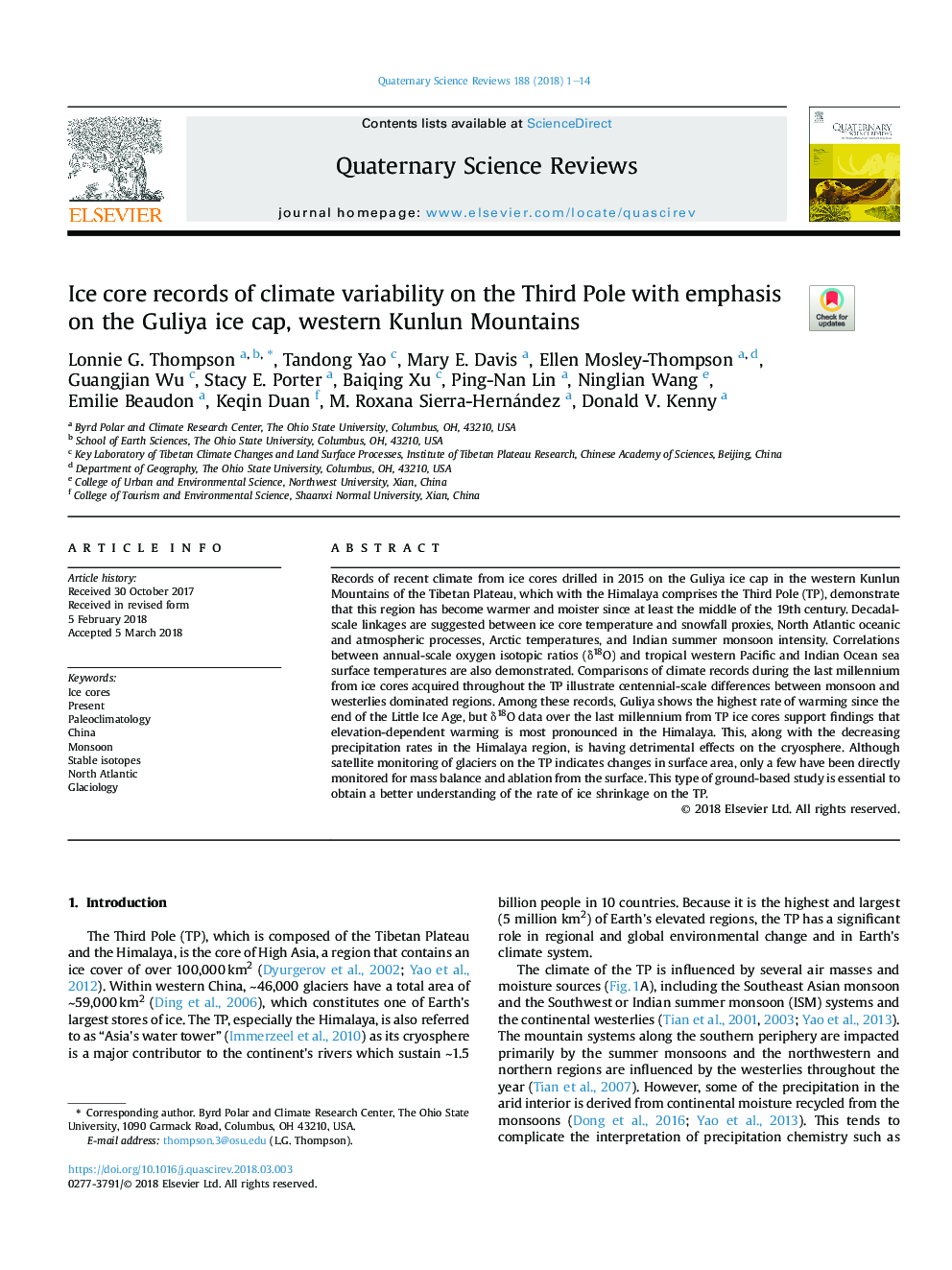| Article ID | Journal | Published Year | Pages | File Type |
|---|---|---|---|---|
| 8914834 | Quaternary Science Reviews | 2018 | 14 Pages |
Abstract
Records of recent climate from ice cores drilled in 2015 on the Guliya ice cap in the western Kunlun Mountains of the Tibetan Plateau, which with the Himalaya comprises the Third Pole (TP), demonstrate that this region has become warmer and moister since at least the middle of the 19th century. Decadal-scale linkages are suggested between ice core temperature and snowfall proxies, North Atlantic oceanic and atmospheric processes, Arctic temperatures, and Indian summer monsoon intensity. Correlations between annual-scale oxygen isotopic ratios (δ18O) and tropical western Pacific and Indian Ocean sea surface temperatures are also demonstrated. Comparisons of climate records during the last millennium from ice cores acquired throughout the TP illustrate centennial-scale differences between monsoon and westerlies dominated regions. Among these records, Guliya shows the highest rate of warming since the end of the Little Ice Age, but δ18O data over the last millennium from TP ice cores support findings that elevation-dependent warming is most pronounced in the Himalaya. This, along with the decreasing precipitation rates in the Himalaya region, is having detrimental effects on the cryosphere. Although satellite monitoring of glaciers on the TP indicates changes in surface area, only a few have been directly monitored for mass balance and ablation from the surface. This type of ground-based study is essential to obtain a better understanding of the rate of ice shrinkage on the TP.
Related Topics
Physical Sciences and Engineering
Earth and Planetary Sciences
Geology
Authors
Lonnie G. Thompson, Tandong Yao, Mary E. Davis, Ellen Mosley-Thompson, Guangjian Wu, Stacy E. Porter, Baiqing Xu, Ping-Nan Lin, Ninglian Wang, Emilie Beaudon, Keqin Duan, M. Roxana Sierra-Hernández, Donald V. Kenny,
